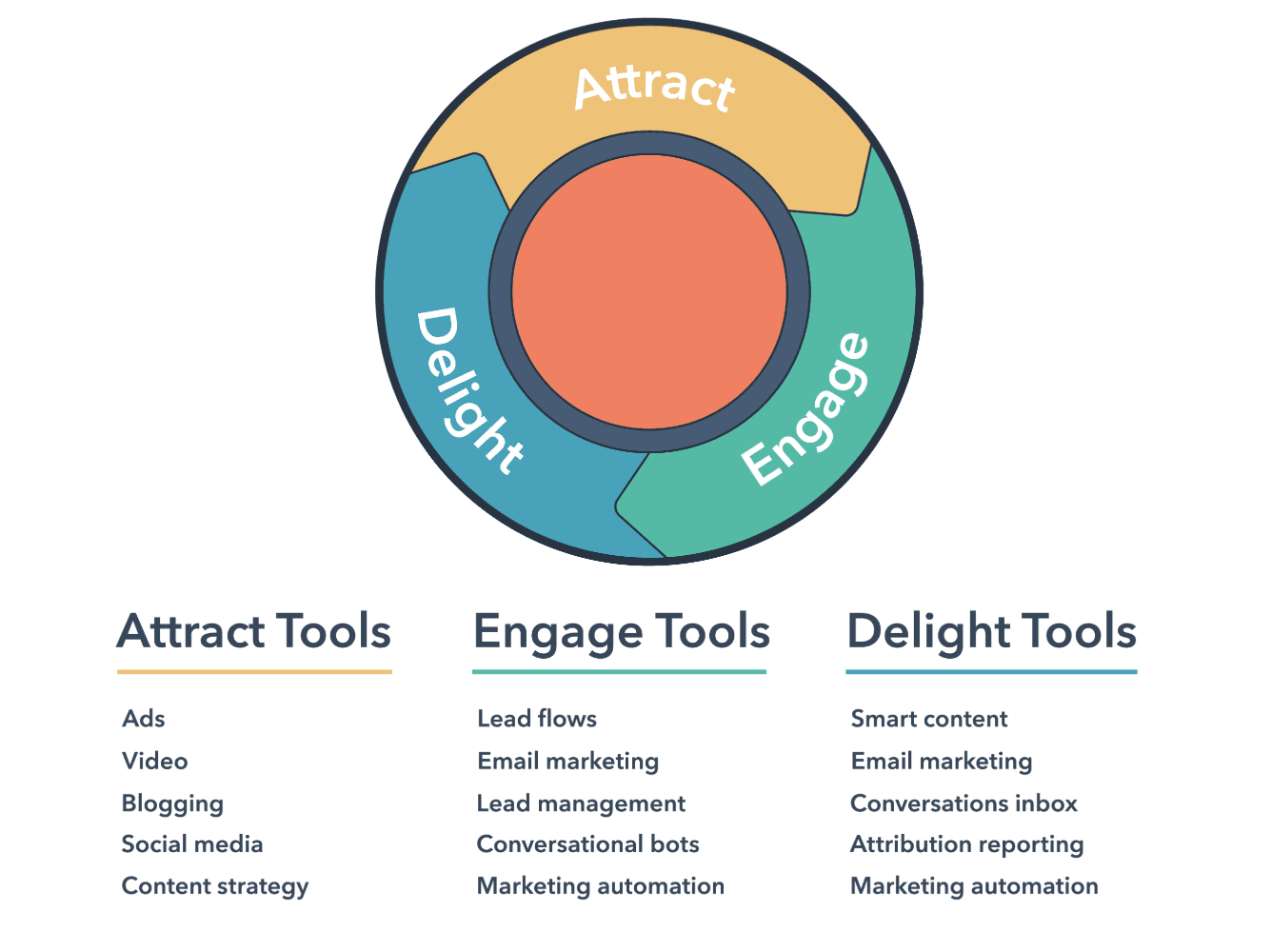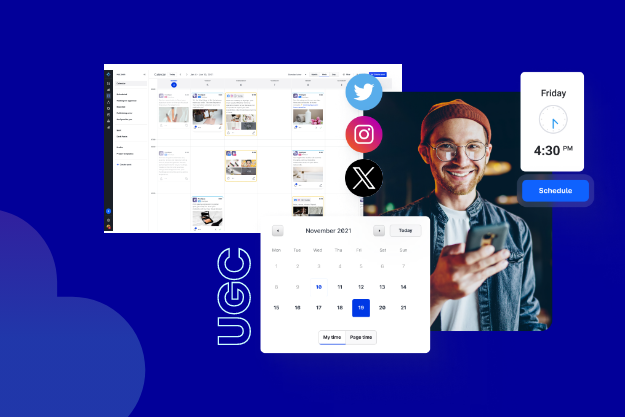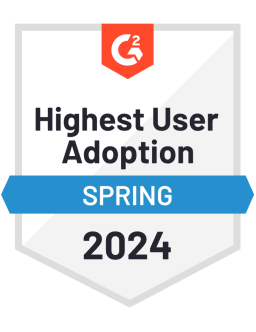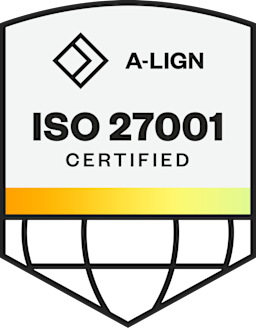One of the reasons most organizations don't get the most out of their user-generated content (UGC) is because it tends to live within their social media or customer marketing department, and this department doesn't always live on the same proverbial floor as their bloggers, web copywriters, and other marketing team members who manage their CMS or website/blog updates.
This disconnect results in the underutilization of their UGC, leaving money on the table. However, mapping out your UGC assets to your marketing processes, and operationalizing it into your team's workflows will ensure that you are able to get the most out of your customers' content.
Before we get into these tactics, here is how UGC is incorporated within an inbound-aligned company.
Inbound strategy and UGC
Each stage of the inbound methodology is aligned with how buyers research, connect with and buy from organizations. UGC has a place within each stage, and within each stage, there are tactics and tools that enable you to provide social proof to your buyers.
Here are the three stages and corresponding tools of the inbound methodology.

These are general guidelines, and your organization may be using different tools and tactics based on your company's goals and customers' preferences. By understanding the tactics involved in each stage, you can map out elements of UGC according to your customers' buying process.
Mapping out your UGC
Before you think through how you are going to promote your UGC, take an inventory of it. Use these funnel stages — utilizing marketing stage and content format — to map out the types of UGC you have at your disposal to use across your website, social channels, email, ads, conversational content, or other branded content:
Attract
Educational guest blog posts from your customers
User-generated videos from your last event/conference
Engage
Testimonials
Instagram posts from your customers
Delight
Customer quotes
Customer success stats
After mapping out your content, you'll be in a solid position to integrate it into your day-to-day processes.
Integrating UGC into your processes
Here are two methods to help your team operationalize UGC:
Templatization: When your agency, bloggers, or web copywriters sit down to complete a project, how have you made it simple for them to incorporate UGC? How are the UGC requirements mapped out for them to incorporate it into your website? Through a simple field in your web copy or blogging templates, you can provide them with a link to your UGC that is clearly mapped out by your buyer's journey stage. The ultimate goal is to make it as seamless as possible for your team to add UGC into your web copy or editorial content.
CMS integration: How easy is it for your team to showcase UGC on your site? Tools such that enable dynamic content display in both your website (and other marketing initiatives) can make it a breeze for your web team to bring your UGC to life. One of the biggest mistakes we see in this area is brands' inability to add a bit of polish to their UGC. If your customers are providing quotes, images, or mentions on social, then make sure they stand out on your website anddon'tt appear to be an afterthought.
UGC shouldn't be something that only your social team is responsible for. Social credibility plays a powerful role in moving your prospects through each stage of the buyer's journey. By mapping out your UGC, updating your content creation process, and adding UGC modules/tools in your CMS, you'll be well on your way to extracting more value from your customers' word of mouth.
Paul Schmidt is a senior strategist at SmartBug Media™. He works with clients on SEO, analytics, lead generation, sales enablement, customer success, and inbound marketing strategy. He previously worked at HubSpot, helping develop inbound strategies for more than 200 clients. His past clients include Travelers Insurance, Unilever, and the SABIAN Cymbal Company. Paul studied percussion in Las Vegas and got his MBA in marketing in Boston.
Editor's Note: This article was originally published on pixlee.com. Any statistics or statements included in this article were current at the time of original publication.




































